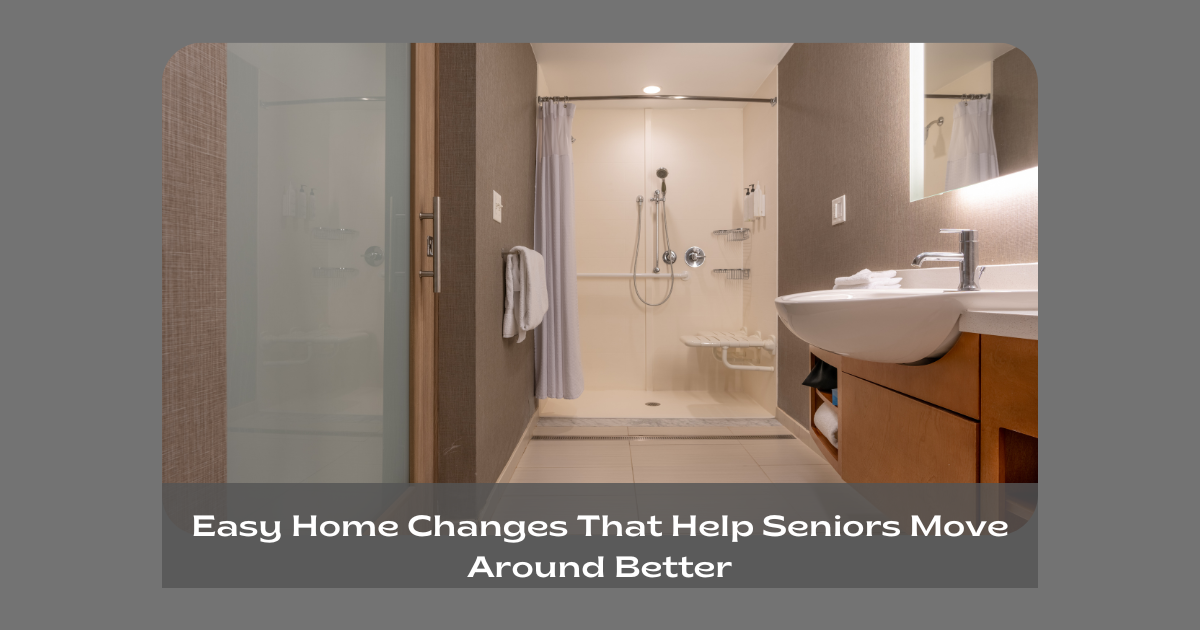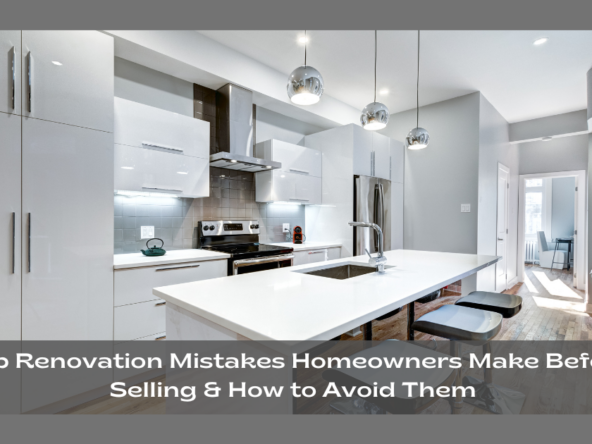As baby boomers and empty nesters consider downsizing, their new homes need to be safe and easy to use. Many older adults find that simple changes in their homes can greatly improve comfort and independence. Let’s explore some straightforward ways to make homes more accessible for seniors.
Understanding the Importance of Accessibility
Accessibility means making it easier for everyone, especially seniors, to move around and do daily tasks. As people age, it becomes harder to navigate stairs, reach high shelves, or get into a bathtub. Improving accessibility allows seniors to stay in their homes longer and live more independently with greater ease. Learn more about aging in place and how to make homes suitable for seniors’ long-term needs.
Start with the Entryway
The first part of a house to think about is the entryway. This area often includes steps and thresholds that can be hard to navigate. Here are some simple changes to make:
- Install ramps: If there are steps leading to the front door, a ramp can make it easier for those using wheelchairs or walkers. Make sure the ramp is gently sloped and sturdy.
- Widen doorways: A wider doorway can help those using mobility aids to pass through easily. You may also consider removing thresholds that are easy to trip on.
- Add good lighting: A well-lit entryway makes it easier to see where you’re going, reducing the risk of falls. Consider automatic lights that turn on when someone approaches.
Kitchen Changes for Easier Cooking
The kitchen is the heart of the home and a place where seniors spend a lot of time. Here are some changes that can be made:
- Lower shelves and counters: Bring kitchen items down to a level that’s easy to reach. Having everything at a comfortable height helps avoid the need to stretch or climb.
- Use pull-out cabinets: Cabinets with pull-out shelves make it simple to reach inside without bending over. They can also help keep the kitchen organized.
- Install lever handles: Replacing knobs with levers on drawers and faucets can make them easier to use for those with arthritis or limited hand strength. Learn more about arthritis-friendly home adaptations that can improve comfort.
Bathroom Safety Enhancements
Bathrooms are often the most dangerous room for slips and falls. These changes can make them safer:
- Add grab bars: Secure bars near the toilet and inside the shower or bathtub can help provide extra support when moving around.
- Non-slip floors: Use non-slip mats or strips in the bathroom to prevent falls. Also, consider non-slip tiles if a remodel is in order.
- Walk-in shower: A walk-in shower is easier to access than a traditional bathtub. For seniors, this reduces the chance of tripping over a bathtub’s edge. Check out more bathroom safety tips for seniors to reduce fall risks.
Floors and Hallways
Moving around the home can be challenging with uneven floors and narrow hallways. Here’s how to improve them:
- Remove rugs and clutter: Rugs can be tripping hazards. Clear walkways and floors so there are no obstacles to trip over.
- Smooth floor transitions: Between rooms, floor transitions should be as level as possible. Avoid thresholds that can catch a foot or walker.
- Widen hallways: If it’s within your budget, consider widening narrow hallways. This can accommodate wheelchairs or walkers more easily.
Bedroom Adjustments
A bedroom is a sanctuary. Comfort and ease in this room are vital for rest and relaxation.
- Lower the bed: A bed that’s too high or too low can be challenging to get in and out of. Adjust the bed to a height that the senior can easily manage.
- Install good lighting: Ensure there’s a bedside lamp that’s easy to turn off and on without getting out of bed. Consider nightlights to provide a path of light to the bathroom.
- Organized closet space: Utilize low shelving and baskets to maximize reachability. This helps seniors access clothing and other items without excessive reaching or bending.
Additional Smart Tech Solutions
Modern technology can greatly assist seniors in maintaining their independence. Consider these options:
- Voice-activated systems: These can control lighting, thermostats, and even security systems with simple voice commands.
- Smart doorbells: Devices with cameras can show who is at the door without having to open it. This adds both convenience and safety. Look into the best smart home devices for seniors for more ideas.
- Medication reminders: Use alarms or smart pill dispensers to remind seniors to take their medications on time.
Making the Home a Comfortable Place
Ensuring that a home is safe and comfortable for seniors is not just about big changes. Even small adjustments can make a big difference in their day-to-day living, making them feel more capable and secure. Whether you’re helping grandparents adjust their existing home or looking at preparing a new downsized space, these small changes can make a significant impact on their quality of life.
Older adults deserve to enjoy their homes comfortably and safely. With a few thoughtful updates, seniors can continue to thrive in their homes for many years. By focusing on practicality and simplicity, each change can make life more comfortable and ensure a higher quality of life.




